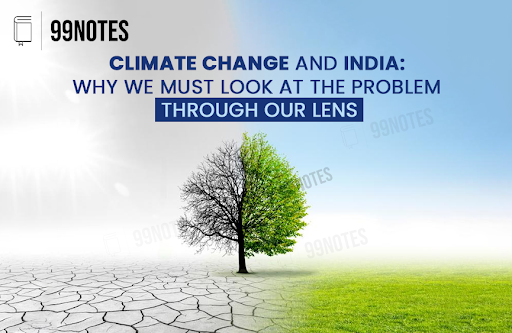24 January 2025 : The Hindu Editorial Analysis
1. India’s winding road to ‘#EndTB’
(Source – The Hindu, International Edition – Page No. – 8)
| Context |
| The article discusses challenges faced by India in achieving its End TB targets due to high global TB burden, drug-resistant cases, and systemic healthcare gaps. |
| Tuberculosis: A Global and National Challenge |
|
Vulnerable Groups at Risk
- High-risk groups include individuals exposed to factors like silicosis, undernutrition, overcrowding, and comorbidities such as diabetes.
- Migrant workers face challenges due to poor access to healthcare and difficulty continuing treatment when moving back to native places.
- Addressing undernutrition is a priority, but other contributory factors require multisectoral actions tailored to specific regions.
Achievements and Challenges in TB Treatment
- India’s National Tuberculosis Elimination Programme (NTEP) offers free and effective drugs, achieving treatment initiation in over 95% of notified cases.
- However, a supply chain disruption in 2023 led to a shortage of key drugs, causing treatment delays, risk of antibiotic resistance, and catastrophic health expenses.
Focus on Extrapulmonary TB (EP-TB)
- Extrapulmonary TB (EP-TB) affects organs other than the lungs, such as lymph nodes, kidneys, brain, and bones, accounting for 24% of cases.
- EP-TB is often missed or diagnosed late due to vague symptoms resembling other diseases.
- General practitioners need better training to detect EP-TB early through simple tests and thorough clinical examinations.
Gaps in Diagnosis and Healthcare Resources
- Studies indicate that only 35% of private practitioners and 75% of government doctors can correctly diagnose classical TB symptoms.
- A shortage of trained staff and limited access to molecular tests like CBNAAT and Truenat delay diagnosis.
- Many testing facilities are district-based, and logistical issues like cartridge shortages and technician availability worsen the problem.
Successful Interventions and Best Practices
- In Idukki, Kerala, collaboration with Kudumbashree, a women’s self-help network, led to significant community participation and advocacy, helping achieve TB targets.
- Advocacy by political leaders and cross-learning from successful practices across regions can enhance TB elimination efforts.
Progress and Future Directions
- India achieved a 24% decline in TB deaths compared to 2015, exceeding the global decline rate.
- Learning from countries like Vietnam, which used active case finding among high-risk groups, could improve interventions.
- India must adapt its strategies and frameworks to address regional challenges and accelerate progress toward eliminating TB.
Conclusion
- Achieving the End TB targets by 2025 remains challenging due to systemic issues, but progress in case notification and reduced deaths offers hope.
- Strengthened healthcare systems and community-driven interventions are crucial to eliminating TB.
| Practice Question: Despite significant efforts, India struggles to eliminate tuberculosis (TB). Analyze the challenges and suggest measures to achieve the End TB targets by 2025 (150 Words /10 marks) |
2. A grey birthday for the Election Commission of India
(Source – The Hindu, International Edition – Page No. – 8)
| Topic: GS2 – Indian Polity |
| Context |
|
Introduction
- Electoral roll integrity is the foundation of a functional democracy, ensuring free, fair, and transparent elections.
- Accurate voter lists prevent fraud, uphold citizens’ rights, and reflect the true will of the people.
Historical Context and Dr. B.R. Ambedkar’s Warning
- Dr. B.R. Ambedkar highlighted the dangers of electoral roll manipulation during the Constituent Assembly debates in June 1949.
- He emphasized that executive interference in electoral rolls compromises democracy and stressed the need for an independent Election Commission of India (ECI).
Significance of Electoral Roll Integrity
- Electoral rolls ensure eligible citizens can participate in elections, safeguarding inclusivity and fairness.
- Manipulated or erroneous rolls, such as ghost voters or exclusions, can undermine democratic processes.
- Trust in electoral outcomes depends on the accuracy and transparency of voter lists.
Challenges to Electoral Roll Integrity
- Inclusion of Ghost and Duplicate Voters:
- Instances of fake or duplicate entries dilute genuine voter representation.
- Exclusion of Eligible Voters:
- Identity, linguistic, or racial discrimination can exclude sections of the population.
- Executive Interference:
- Manipulation of electoral rolls by political entities can tilt election outcomes.
- Lack of Technological Integration:
- Manual systems and outdated verification processes often lead to inaccuracies.
| Case Study: Maharashtra State Elections |
|
Solutions to Ensure Electoral Roll Integrity
- Adoption of Aadhaar-Based Verification:
- Link voter IDs with Aadhaar for de-duplication and elimination of ghost entries.
- Biometric authentication ensures only eligible voters are registered.
- Periodic and Transparent Audits:
- Regular audits of voter rolls by independent agencies enhance accountability.
- Technological Advancements:
- Use of blockchain and AI can improve data accuracy and reduce manipulation risks.
- Voter Awareness Campaigns:
- Educate citizens about registration processes and address discrepancies promptly.
Conclusion
- Electoral roll integrity is vital to preserving democracy and upholding citizens’ rights.
- Adopting robust verification mechanisms, leveraging technology, and maintaining transparency are key to ensuring fairness in electoral processes.
| Practice Question: Discuss the significance of electoral roll integrity in ensuring free and fair elections. Suggest measures to address challenges related to electoral roll accuracy and transparency. (250 Words /15 marks) |
3. Is poverty being underestimated in India?
(Source – The Hindu, International Edition – Page No. – 9)
| Context |
|
Poverty Definition and Underestimation
- Poverty in India was traditionally defined based on the expenditure required to sustain a minimum calorie diet.
- From the late 1970s to 2005, poverty was measured using the National Sample Survey Office (NSSO) data, which was considered stable.
- Over time, divergence in consumption estimates between NSSO and National Accounts led to questions about data accuracy.
- The Tendulkar Committee and new methodologies by NSSO were introduced to improve data collection, though some methodologies led to discrepancies.
- Poverty estimation methods have evolved over time, including the use of the multidimensional poverty index, but the results still depend on the poverty line and the datasets used.
Decline in Poverty
- In the last two decades, poverty has drastically reduced, regardless of the poverty line used.
- Economic factors such as high GDP growth, government flagship programs, and public delivery improvements have contributed to this decline.
- The National Food Security Act, which covers nearly 80 crore people, has been a significant policy intervention in reducing extreme poverty.
- Various poverty lines, like those from the Tendulkar and Rangarajan Committees, show similar poverty reduction trends, around 17-18%.
Concerns with HCES Data
- There have been issues with data consistency due to different recall periods used in consumption surveys, which complicates comparisons over time.
- Despite improvements in methodology, many experts believe that creating a new poverty line for the updated NSSO methodology is necessary for accurate comparisons.
Rural vs Urban Poverty
- The gap between rural and urban poverty is narrowing, with rural areas showing improvements.
- The definition of rural areas, based on the 2011 Census, needs an update as many rural areas have become urban or peri-urban.
- Rural consumption patterns have diversified, and food expenditure now constitutes less than 50% of the total consumption basket.
- Public policy interventions and the changing nature of rural economies are contributing to the reduction in rural poverty.
Revision of Poverty Line
- A revision of the poverty line has been suggested, but there is disagreement about the accuracy of estimates, with some suggesting the poverty rate could be higher than official figures.
- The debate on poverty line revision emphasizes the need for a unified methodology and consistent application of poverty criteria.
- The use of updated methodologies in poverty estimation may lead to a revision of the poverty rate, but experts agree on the importance of a clear and agreed-upon methodology.
Criticism of Multidimensional Poverty Index
- The NITI Aayog’s multidimensional poverty index, which uses 12 indicators, has faced criticism for not being comparable with the UNDP’s index, which uses 10 indicators.
- While the UNDP’s index provides a general framework, it allows countries to customize the indicators based on their needs, which India has done by adding elements like bank accounts and maternal health.
- However, some experts argue that once a household gains access to basic services like electricity or a bank account, they cannot be deprived of these benefits, which may lead to artificially low poverty estimates.
- There is a need to measure income vulnerability to get a more accurate assessment of poverty.
Conclusion
- India has made significant progress in poverty reduction, but the poverty line estimation methodology needs standardization for accurate comparisons.
| PYQ: ‘Despite implementation of various programmes for eradication of poverty by the government in India, poverty is still existing.’ Explain by giving reasons. (150 words/10m) (UPSC CSE (M) GS-1 2018) |
| Practice Question: Discuss the challenges in poverty estimation in India, focusing on the issues related to data methodology, the poverty line, and the effectiveness of multidimensional poverty indices. (250 Words /15 marks) |
For more such UPSC-related The Hindu editorial analysis: –23 January 2025 : The Hindu Editorial Analysis



